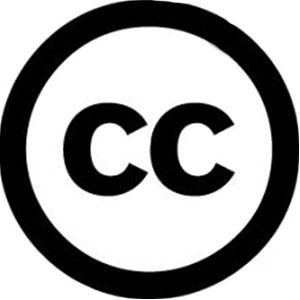Legal Topics

How a Creative Commons License Works
In the Information Age, with so much online access to media and published works, it can be very difficult to enforce copyright--something that artists, producers, and corporations are struggling to do every day. However, we are now seeing the development of a new kind of thinking, putting out original material for public or fair use without any need for copyright enforcement. The most successful organization behind this new licensing movement is Creative Commons.
CC History
Creative Commons was founded in 2001 with the help of the Center for the Public Domain, a department of the Duke University School of Law. Bringing together technology experts, legal scholars, philanthropists, and entrepreneurs, the group's aim was to encourage the sharing of knowledge and creativity through a set of free legal tools. New licenses were created with a foundation on preexisting copyright law, allowing content creators to decide the conditions for their works to be distributed, modified, or republished. This new model was what founder Lawrence Lessing hoped would be a way to get past what he called the "permission culture" that was dominant in society.
Naturally, this has led to criticism that Creative Commons licensing is not a legitimate form of legal protection from creative abuse. Some users have been known to misapply CC licenses to existing works and redistribute them without permission. In fact, the issue of Creative Commons licensing has come up in several court cases, most notably in a 2006 case between podcaster Adam Curry and a Dutch tabloid; the court honored Adam Curry's Non-Commercial license on his photos, which the tabloid had used without his permission.
CC Licensing
When an author puts a Creative Commons license on their work, they are giving their audience permission to share, use, or build upon a work of their own creation. This protects both the original author of the work and the people who use and redistribute it. However, people who share or change a work protected by Creative Commons can only do so under the conditions listed under the license itself.
There are 6 different types of Creative Commons licenses, although some of these cannot be applied to the same work because of conflicting conditions.
The 6 licenses are based on different combinations of the 4 essential conditions set down by Creative Commons:
* Attribution: A user can copy, distribute, perform, or make a derivative work of the original only if they give credit to the original author or licensor.
* Share-alike: A user that distributes a derivative work under Creative Commons licensing can only do so under the same license; this means the work can't be restricted under a new copyright if the original work was permitted for free distribution.
* Non-commercial: A user cannot use or redistribute the work in question for commercial purposes; this area is usually debated, but mostly restricts the work from being used for advertising or for-profit companies, while protecting non-commercial platforms like informative leaflets, public broadcasting, and academic journals.
* No Derivative Works: A user can only share or use the work in its original form, without any modifications that would make it "derivative."
To learn more about fair use and public domain licensing, visit the Creative Commons website.
Image by AJ Cann on Flickr
Current Topics
1. AI ChatGPT Tools in Artificial Intelligence for Lawyers
The world of law is evolving at a pac...
2. What Are the Employment Laws Protecting Worker Rights?
In contemporary jobs, it...
3. Financial Resilience Explained for Stability & Success
Money is so cumulative i...
4. What Are Gig Economy Jobs? Legal Rights You Must Know
The way people work has changed drama...
5. Rights & Mediator's Role in Pregnancy Child Support 2025
The first idea that will come to the ...
6. Digital Courtrooms: VR Evidence & Remote Trials in 2025
Once upon a time, courtrooms were all...
7. How to Find a Good Lawyer Made Simple for Beginners
The first question that ...
8. What Is B Corp Certification & Why Law Firms Want It In 2025
In 2025, impact matters....
9. Key Legal Insights on Division of Property in Divorce
Divorce can be a tough t...
10. Post-Dobbs Abortion Laws: What Women & Providers Must Know
In June 2022, the U.S. S...
